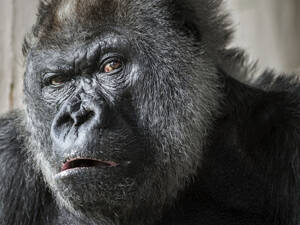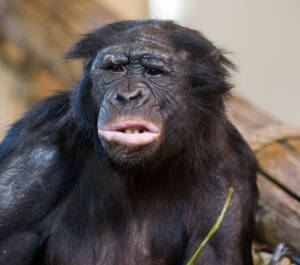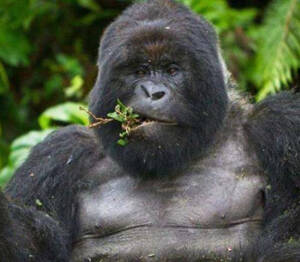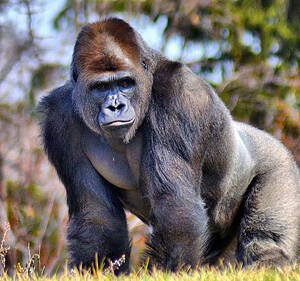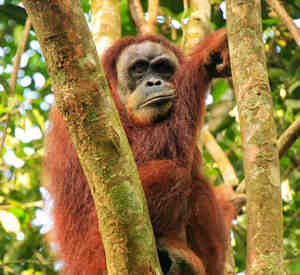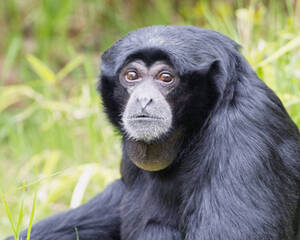Nomascus annamensis
IUCN
LCBasic Information
Scientific classification
- name:Nomascus annamensis
- Scientific Name:Nomascus annamensis,Northern Yellow-cheeked Crested Gibbon、Northern Buff-cheeked Gibbon,Nomascus gabriellae
- Outline:Primates
- Family:Hylobates B.Gibbon
Vital signs
- length:42-46cm
- Weight:About 7kg
- lifetime:No verification information
Feature
Females lack the characteristic crown of hair
Distribution and Habitat
Distributed in Cambodia, Laos, and Vietnam.
In Laos, the northern yellow-cheeked gibbon is found in the southern part of the country (6°00'-16°03'N), east of the Mekong River to the Ban Xiang River in Savannakhet Province. It is found in central and southern Athap Province, Champasak Province, Saravan Province, Savannakhet Province, and Xekong Province.
In Cambodia, the northern yellow-cheeked gibbon occurs north of the Srepok River in Stung Treng and Ratanakiri Provinces (approximately 13°30'N). The largest population is found in Virachey National Park, while the adjacent Veun Sai-Siem Pang Reserve Forest to the south of the park supports a group of about 500 individuals (Rawson et al., 2012).
In Vietnam, it is found from the Sahe Han River (approximately 16°40'-16°50') in Quang Tri Province in the north to the Ba River (approximately 13°00'-13°10'N), flowing through Gia Lai and Phu Yen Provinces in the south. Distributed in Bac Huong Hoa an
Appearance
The head and body length of male northern yellow-cheeked gibbons can reach 46 cm, while females are slightly smaller, at 42 cm. They weigh 7 kg. In appearance, they are similar to the southern red-cheeked gibbon (Nomascus gabriellae). Like all species of its genus, northern yellow-cheeked gibbons have a clear sexual dimorphism. The fur of males is mainly black, which shines in the sun, with a light brown chest. The cheeks are tawny and the hair on the top of the head is very prominent. However, females lack the characteristic hair crown and have orange-beige body hair color, with darker hair on the chest.
The young apes are born with white fur, which then turns black. Males maintain this color, while females change to tawny fur when they reach sexual maturity.
Details
The Northern Yellow-cheeked Crested Gibbon (scientific name: Nomascus annamensis) is also known as the Northern Yellow-cheeked Crested Gibbon and the Northern Buff-cheeked Gibbon. It used to belong to the same species as the Red-cheeked Gibbon (Nomascus gabriellae). Genetic DNA and sound studies have confirmed that the Northern Yellow-cheeked Gibbon is different from the Red-cheeked Gibbon. In 2010, the Northern Yellow-cheeked Gibbon was officially classified as an independent species, with the standard Chinese name "Northern Yellow-cheeked Gibbon".
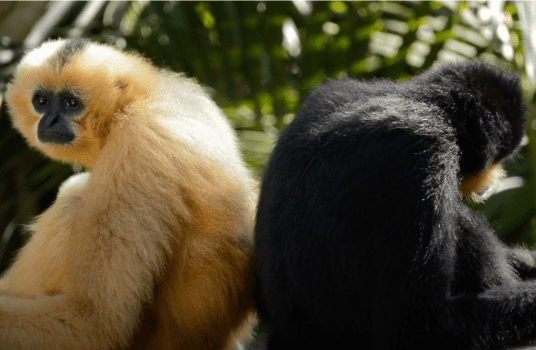
The Northern Yellow-cheeked Gibbon is a diurnal and arboreal species. The activity time is: 32% inactive, 30% moving, 26% eating, 10% socializing and 2% other. They usually live in monogamous family groups with a family range of about 50 hectares. The species is frugivorous, but also consumes a lot of leaves, shoots and flowers. They also feed on Finlayson's squirrels and lizards.
Between 2000 and 2015, more than 220 individuals were recorded in Vietnam. The main populations occur in Dak Rong and PhongDien Nature Reserves. In Cambodia, Virachey National Park has a large population of the species, probably more than any area in Vietnam (Traeholt et al., 2005, Rawson et al., 2011). In a 2018 survey in Virachey National Park, 332 individuals of the species (excluding single males) were recorded at 2 survey sites throughout the park; preliminary analysis of the data estimated that there are more than 2,000 individuals in Virachey. The northern yellow-cheeked gibbon distributed in Laos has not been counted in detail in recent years, although it is also important in terms of population. In 1995, an estimated 400-6,720 individuals were present in the Xe Pian NPA, representing the largest known population in a single protected area and a globally significant stronghold of the species (FFI unpublished data).
Listed in the IUCN Red List of Threatened Species 2015 ver3.1 - Endangered (EN).
Listed in Appendix I, Appendix II and Appendix III of the Convention on International Trade in Endangered Species of Wild Fauna and Flora (CITES) 2019 edition.
Protect wild animals and stop eating game.
Maintaining ecological balance is everyone's responsibility!
The Northern Yellow-cheeked Crested Gibbon (scientific name: Nomascus annamensis) is also known as Northern Yellow-cheeked Crested Gibbon and Northern Buff-cheeked Gibbon. It used to belong to the same species as the Red-cheeked Gibbon (Nomascus gabriellae). Genetic DNA and sound studies have confirmed that the Northern Yellow-cheeked Crested Gibbon is different from the Red-cheeked Gibbon. In 2010, the Northern Yellow-cheeked Gibbon was officially classified as an independent species, with the standard Chinese name "Northern Yellow-cheeked Gibbon".

The Northern Yellow-cheeked Gibbon is a diurnal and arboreal species. The activity time is: 32% inactive, 30% moving, 26% eating, 10% socializing and 2% other. They usually live in monogamous family groups with a family range of about 50 hectares. The species is frugivorous, but also consumes a lot of leaves, shoots and flowers. They also feed on Finlayson's squirrels and lizards.
Between 2000 and 2015, more than 220 individuals were recorded in Vietnam. The main populations occur in Dak Rong and PhongDien Nature Reserves. In Cambodia, Virachey National Park has a large population of the species, probably more than any area in Vietnam (Traeholt et al., 2005, Rawson et al., 2011). In a 2018 survey in Virachey National Park, 332 individuals of the species (excluding single males) were recorded at 2 survey sites throughout the park; preliminary analysis of the data estimated that there are more than 2,000 individuals in Virachey. The northern yellow-cheeked gibbon distributed in Laos has not been counted in detail in recent years, although it is also important in terms of population. In 1995, an estimated 400-6,720 individuals were present in the Xe Pian NPA, representing the largest known population in a single protected area and a globally significant stronghold of the species (FFI unpublished data).
Listed in the IUCN Red List of Threatened Species 2015 ver3.1 - Endangered (EN).
Listed in Appendix I, Appendix II and Appendix III of the Convention on International Trade in Endangered Species of Wild Fauna and Flora (CITES) 2019 edition.
Protect wild animals and stop eating game.
Maintaining ecological balance is everyone's responsibility!

